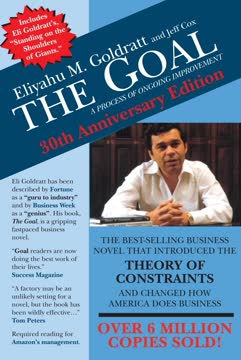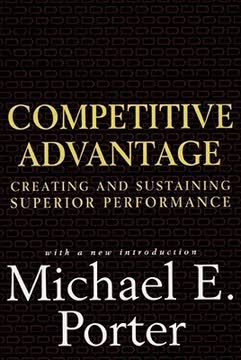Key Takeaways
1. Entrepreneurs must lead startup communities for long-term success
The leaders must have a long-term commitment.
Visionary leadership. Successful startup communities are driven by entrepreneurs who commit to a 20-year vision, resetting daily. This long-term perspective allows communities to weather economic cycles and sustain growth. Entrepreneurs, as leaders, understand the unique challenges and opportunities of startups, making them best suited to guide the community's development.
Network over hierarchy. Entrepreneurial leaders foster a networked structure rather than a hierarchical one. This approach encourages organic growth, adaptability, and the emergence of new leaders over time. By focusing on action and results rather than titles or positions, entrepreneurial leaders create a dynamic ecosystem that can evolve with the needs of its members.
2. Startup communities thrive on inclusivity and continuous engagement
The startup community must be inclusive of anyone who wants to participate in it.
Open doors policy. Successful startup communities welcome newcomers, regardless of their background or experience. This inclusivity ensures a constant influx of fresh ideas and talent, fueling innovation and growth. Leaders should actively work to integrate new members, connecting them with resources and opportunities within the community.
Continuous activities. Regular events and programs that engage the entire entrepreneurial stack are crucial. These can include:
- Hackathons
- Meetups
- Open coffee clubs
- Startup weekends
- Accelerator programs
Such activities foster collaboration, learning, and networking, keeping the community vibrant and connected.
3. Universities play a crucial role as feeders, not leaders
Universities are a source of fresh blood, new thinking, and additional potential leaders to your startup community.
Talent pipeline. Universities provide a steady stream of young, innovative minds to the startup ecosystem. They serve as crucial feeders by:
- Supplying fresh talent
- Offering research facilities and expertise
- Providing spaces for community events and collaboration
Entrepreneurial programs. Effective university involvement goes beyond traditional business school offerings. Cross-disciplinary programs, entrepreneurship centers outside business schools, and initiatives like CU Boulder's Silicon Flatirons demonstrate how universities can best support startup communities without attempting to lead them.
4. Government should support, not control, startup ecosystems
Government exists to support, yet many local and state governments believe they can create.
Supportive role. Government can best contribute to startup communities by:
- Reducing regulatory barriers
- Providing tax incentives for startups and investors
- Offering grants or matching funds for entrepreneurial initiatives
- Creating favorable policies for talent attraction and retention
Hands-off approach. Government should avoid trying to control or lead startup communities. The mismatch in timelines, goals, and operational styles between government and startups often leads to ineffective interventions when government takes a heavy-handed approach.
5. Accelerators like TechStars catalyze startup community growth
TechStars uniquely hit on all four of the principles in the Boulder Thesis, and this is one of the reasons it is such a powerful construct.
Mentor-driven model. Accelerators like TechStars provide intensive, short-term programs that compress years of learning into months. They operate on principles of:
- Mentorship from experienced entrepreneurs
- Seed funding
- Intensive networking
- Demo days to showcase startups to investors
Community catalyst. Accelerators serve as focal points for startup communities, bringing together entrepreneurs, investors, and mentors. They create a virtuous cycle of talent development, company creation, and community engagement that can significantly boost a startup ecosystem's growth and visibility.
6. Mentorship and giving back are fundamental to community strength
The best moment in a mentor-mentee relationship is when the mentor learns as much, or more, from the mentee.
Culture of giving. Successful startup communities foster a "give before you get" mentality. This approach encourages experienced entrepreneurs to mentor newer ones, creating a self-reinforcing cycle of knowledge sharing and support. The benefits often return to mentors in unexpected ways, strengthening the entire community.
Continuous learning. Mentorship in thriving startup communities is a two-way street. As mentors share their experiences, they also gain fresh perspectives and insights from their mentees, keeping the community dynamic and adaptive to new trends and technologies.
7. Embrace failure, experimentation, and honest feedback
Having specific initiatives fail must be an accepted part of the culture of a startup community.
Fail fast philosophy. Startup communities should encourage experimentation and rapid iteration. Embracing failure as a learning opportunity rather than a stigma allows for:
- Quicker identification of promising ideas
- More efficient resource allocation
- Greater willingness to take risks
Honest feedback. Creating an environment where direct, constructive criticism is valued helps startups improve faster and builds resilience within the community. This culture of honesty and continuous improvement drives innovation and success.
8. Diversity and space constraints pose ongoing challenges
Diversity in a startup community comes in two forms: ethnicity and gender.
Diversity initiatives. Addressing the lack of diversity in many startup communities requires deliberate effort:
- Programs targeting underrepresented groups
- Mentorship initiatives for women and minorities
- Inclusive event planning and community outreach
Space solutions. As startups grow, finding adequate office space can become a major challenge, especially in smaller cities. Communities can address this by:
- Developing dedicated startup neighborhoods
- Encouraging mixed-use developments
- Leveraging remote work options
- Creating co-working spaces and incubators
9. Integration across sectors and regions amplifies community impact
I-25 is a highway that runs from the top of Colorado to the bottom. There are four major cities located within a two-hour drive of each other.
Cross-sector collaboration. Integrating different startup sectors (e.g., tech, biotech, natural foods) can lead to unexpected innovations and stronger overall ecosystems. Communities should create opportunities for cross-pollination of ideas and resources between these parallel universes.
Regional connectivity. Startup communities can benefit from connecting with neighboring cities or regions. This approach:
- Expands the talent pool
- Increases access to resources and funding
- Creates a larger, more diverse market for startups
Initiatives like Startup Colorado demonstrate how regional integration can amplify the impact of individual startup communities.
10. Avoid mimicking Silicon Valley; develop unique local strengths
To save time, here is the answer to the Silicon Valley question: You can't—you only think you want to.
Leverage local assets. Instead of trying to replicate Silicon Valley, successful startup communities focus on their unique strengths, such as:
- Local industries or expertise
- Cultural attributes
- Geographic advantages
- Educational institutions
Organic growth. Authentic startup communities develop organically, driven by the passion and commitment of local entrepreneurs. Focusing on building genuine connections, fostering local talent, and addressing community-specific challenges leads to more sustainable and distinctive startup ecosystems.
Last updated:
FAQ
What's "Startup Communities: Building an Entrepreneurial Ecosystem in Your City" about?
- Focus on Entrepreneurial Ecosystems: The book explores how to build and sustain a vibrant startup community in any city, using Boulder, Colorado, as a primary example.
- Boulder Thesis: It introduces the Boulder Thesis, which outlines four key principles for creating a successful startup community.
- Role of Entrepreneurs: Emphasizes that entrepreneurs must lead the community, with a long-term commitment and a philosophy of inclusiveness.
- Engagement and Activities: Discusses the importance of engaging the entire entrepreneurial stack through regular activities and events.
Why should I read "Startup Communities" by Brad Feld?
- Practical Framework: Provides a practical framework for building a startup community, applicable to any city.
- Real-World Examples: Uses real-world examples from Boulder and other cities to illustrate key concepts.
- Long-Term Vision: Encourages a long-term vision and commitment to developing a sustainable entrepreneurial ecosystem.
- Community Building: Offers insights into fostering a collaborative and inclusive community culture.
What are the key takeaways of "Startup Communities"?
- Entrepreneurs Lead: Entrepreneurs must be the leaders of the startup community, not government or other organizations.
- Long-Term Commitment: Building a startup community requires a long-term commitment, ideally 20 years or more.
- Inclusiveness: A successful startup community is inclusive, welcoming anyone who wants to participate.
- Engagement: Regular activities and events are crucial to engage the entire entrepreneurial stack.
What is the Boulder Thesis in "Startup Communities"?
- Entrepreneurs as Leaders: Entrepreneurs must lead the startup community.
- Long-Term Commitment: Leaders must have a long-term commitment to the community.
- Inclusiveness: The community must be inclusive of anyone who wants to participate.
- Engagement: There must be continual activities that engage the entire entrepreneurial stack.
How does "Startup Communities" suggest engaging the entire entrepreneurial stack?
- Regular Activities: Organize regular activities like meetups, hackathons, and startup weekends.
- Diverse Participation: Ensure activities engage a wide range of participants, from first-time entrepreneurs to experienced investors.
- Community Events: Host events that encourage networking and collaboration among different stakeholders.
- Mentorship Programs: Develop mentorship programs to connect experienced entrepreneurs with newcomers.
What role do universities play in "Startup Communities"?
- Source of Talent: Universities provide a steady stream of young, talented individuals to the startup community.
- Research and Innovation: They can be a source of research and innovation, contributing to new startups.
- Convening Power: Universities can serve as a convening space for events and activities.
- Feeder, Not Leader: Universities should act as feeders to the startup community, not leaders.
How does "Startup Communities" differentiate between accelerators and incubators?
- Mentor-Driven: Accelerators are mentor-driven programs that focus on intensive, short-term development.
- Cohort-Based: They typically operate on a cohort basis, with a set start and end date.
- Incubators: Incubators provide space and resources but often lack the structured, intensive mentorship of accelerators.
- Economic Development: Incubators are often linked to economic development goals, while accelerators focus on rapid growth and scaling.
What are some classical problems in startup communities according to "Startup Communities"?
- Patriarch Problem: Dominance by a few established leaders can stifle new leadership.
- Capital Complaints: Constant complaints about lack of local capital can be counterproductive.
- Government Reliance: Over-reliance on government can hinder the organic growth of the community.
- Short-Term Focus: Making short-term commitments rather than long-term investments in the community.
What myths about startup communities does "Startup Communities" address?
- Silicon Valley Myth: The idea that every city needs to be like Silicon Valley is a myth.
- Local Venture Capital: Believing that more local venture capital is necessary for a successful startup community.
- Organized Angels: The notion that angel investors must be organized into formal groups to be effective.
- Government Leadership: The myth that government should lead the startup community.
What are the best quotes from "Startup Communities" and what do they mean?
- "Give Before You Get": This quote emphasizes the importance of contributing to the community without expecting immediate returns, fostering a culture of collaboration and support.
- "Entrepreneurs must lead": Highlights the necessity for entrepreneurs to take charge of the community's direction and growth.
- "Long-term commitment": Stresses the need for a sustained effort over decades to build a thriving startup ecosystem.
- "Be inclusive": Encourages openness and acceptance of all who wish to participate, ensuring diverse perspectives and ideas.
How does "Startup Communities" suggest dealing with the patriarch problem?
- Ignore Hierarchies: Encourage new leaders to emerge by ignoring existing hierarchies and focusing on action.
- Embrace New Leaders: Welcome new leaders and give them opportunities to take on responsibilities.
- Focus on Community: Prioritize the success of the community over individual status or control.
- Encourage Diversity: Promote diverse leadership to prevent dominance by a single group.
What is the role of government in "Startup Communities"?
- Supportive Role: Government should play a supportive role, not a leadership role, in the startup community.
- Policy and Infrastructure: Focus on creating policies and infrastructure that facilitate entrepreneurship.
- Avoid Control: Avoid trying to control the community or dictate its direction.
- Engage with Entrepreneurs: Engage with entrepreneurs to understand their needs and challenges.
Review Summary
Startup Communities receives mostly positive reviews for its practical insights on building entrepreneurial ecosystems. Readers appreciate Feld's real-world examples from Boulder and actionable advice. Key concepts like "Give before you get" and long-term thinking resonate with many. Some criticize the book for being too US-centric or repetitive. While most find it valuable for those interested in startups and community building, a few readers felt it lacked depth or was overly focused on Boulder's specific experience.
Similar Books










Download PDF
Download EPUB
.epub digital book format is ideal for reading ebooks on phones, tablets, and e-readers.






